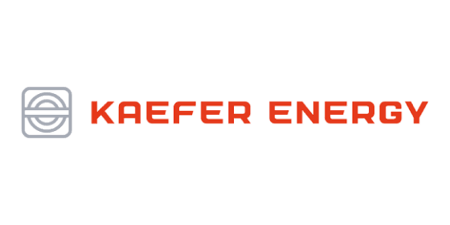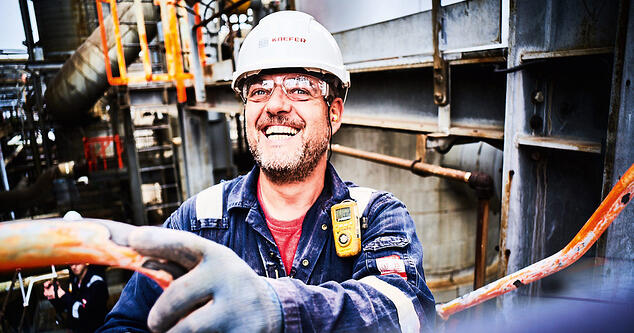
Client:KAEFER Energy
Industry:Energy and Utilities
Region:Europe
Finance and Accounting (F&A)
KAEFER Energy makes RPA a key part of its digitalization strategy

10 mins
Human involvement in document gathering for invoicing reduced from 4 hours to 10 minutes
2 months
Automations taken from initial design to production in under 2 months
Platform
Digitization platform enables the deployment of automation across the company
Free teams
Automations free finance and administration teams for ‘value creating’ work
Client Overview
KAEFER Energy is a leading Norwegian insulation, scaffolding and surface treatment (ISO) company aimed primarily at the oil and gas industry. The company offers 40 years of experience and expertise through all project phases – in scaffolding, access, surface and interior design – as well as a range of engineering services. With headquarters in Stavanger, the company employs over 1700 people and has adopted adigitalization strategy designed to streamline and simplify work processes.
Partner

One of Norway’s large oil & gas-companies seeks to make time-consuming and repetitive work a thing of the past through RPA and digitalization.
Asked about KAEFER Energy’s digitalization strategy, Jon Erik De Vries, Project Controller in charge of RPA says that the company starts every project with a simple thought: There must be a better way to do this. The oil & gas firm saw that its finance and administrative functions had many rules-based and repetitive tasks that were prime for automation. Now. It’s looking to deliver the benefits of RPA across the entire organization.
The oil & gas industry is an ecosystem of companies all collaborating closely together to successfully deliver projects. For a firm like KAEFER Energy, this means building strong working relationships with customers, suppliers and other trading partners. Heavily manual tasks and activities in finance and administration add error, time and cost into key processes such as invoicing and payments, which can damage customer and supplier relationships.
Freeing people for ‘value creating work’
KAEFER Energy established its digitalization strategy to select the best digital tools that would contribute to streamlining and simplifying work processes. Process automation very quickly became an important part of this strategy. The company saw that RPA was an ideal tool to perform simple transaction-based tasks.
Jon Erik explains: “It all started to reduce all the manual steps that we were doing in our everyday job. Our primary objective wasn’t just to save time and money. It was really about allowing our people to concentrate on what we call ‘value creating’ work.”

The company selected UiPath’s Scandinavian partner, Atea to provide a range of RPA services, including the design, development, management and maintenance of automations. The relationship that the two companies quickly established allowed KAEFER Energy to accelerate its RPA program.
Fredrik Lippe, RPA Developer at Atea, says: “We were able to show Jon Erik RPA automations that we’d developed for similar companies. It built a level of trust so that KAEFER Energy were comfortable to forego a pilot project and instead take its initial automations directly into production.”
Our primary objective wasn’t just to save time and money. It was really about allowing our people to concentrate on what we call ‘value creating’ work.
Jon Erik De Vries • RPA Project Controller, KAEFER
Delivering real business benefits
One of the first workflows automated was part of the process to generate invoices. When the company receives an invoice, it has to be entered into a back-end system and all related documents gathered together and attached to the invoice before it can move on. The invoice and all other documents had to enter into the system manually.
Using UiPath, the company was able to automate the collection of data and information as well as the generation of reports. This could be applied not just to the initial invoice processing but a range of similar processes within the department, such as the collation and reporting of travel expenses.
“There were three or four processes we identified where a team of five were spending half a day per month each to accomplish. By automating the processes, the person is now only involved for 10 minutes. It takes the automation around 45 minutes to complete but, of course, that’s time our staff can devote to other tasks,” comments Jon Erik.
Since beginning its RPA journey in 2019, KAEFER Energy has automated six processes across several business functions, including HSE and Salaries. It can now take an automation from initial concept to final production in under two months because the invoice processing automation demonstrated how focusing on simple tasks and activities in key processes can reap major results.
Jon Erik says: “When you have a process which is highly repeatable with few variables you have the basis for stable and effective automation. The invoice processing RPA was up and running quickly, for example, and it hasn’t gone wrong since.”
It takes the automation around 45 minutes to complete but, of course, that’s time our staff can devote to other tasks.
Jon Erik De Vries • RPA Project Controller, KAEFER
An important learning experience
However, invoicing wasn’t the first process to be automated. The company began with its scaffolding log – a weekly report setting out the location and usage of its scaffolding. The log was intensive, and people had to manually manipulate and report on it every week. It had many variables that could, and often did, change on a weekly basis.
The company soon discovered that process complexity meant that it was difficult to maintain a stable automation with so many changing variables and rules that had to be amended over time.
Jon Erik says: “We selected the scaffolding log as I would describe it as a very vulnerable process. It meant people had to be working on it continuously, even at weekends and holidays. It met our criteria of freeing people, but it also showed that looking for simpler, high value automations was where our RPA program should start. It was an important lesson for us.”
A forum to drive deployment
“It’s vital that we don’t just go into a department and push RPA with great claims of time and cost saving,” says Jon Erik. “We need people to come to us and be willing to engage. They must want to devote their time and energy to becoming a part of our digitalization journey.”
To achieve this, KAEFER Energy has established its digitalization group. It’s a mechanism where subject matter experts from across the company can come together to discuss digitalization and the role RPA can play in its digitization initiatives.
Our platform provides the forum to build knowledge and understanding within the business that’s helping us to broaden and deepen our deployment of RPA
Jon Erik De Vries • RPA Project Controller, KAEFER
"The business departments can be quite independent from each other, and one department can have an automation initiative that others don’t know about but could quickly benefit from. Our platform provides the forum to build knowledge and understanding within the business that’s helping us to broaden and deepen our deployment of RPA,” states Jon Erik.
Building people’s trust
The reason that KAEFER Energy has begun its program by concentrating on the low-hanging fruit was a very deliberate decision to be able to demonstrate to end users that RPA could deliver something to them. The program set out to build people’s trust in automation.
Like every company, people often have so much to do in their day-to-day jobs that finding time for extra activities can be difficult. Paradoxically, the manual activities that RPA will remove are the same ones that often prevent employees from getting involved. The RPA team knew that they needed to be able to show the real benefits people would receive.
But, there was another reason that taking this approach has been important.
Jon Erik says: “When we show things like the invoicing automation the reaction is very positive and everyone is really happy. It helps build trust. That’s the trust we need to move forward in our program. With the simple processes, people see that RPA works. It means they’re likely to be happy when we begin to automate more complex, end-to-end processes.”
When we show things like the invoicing automation the reaction is very positive, and everyone is really happy. It helps build trust.
Jon Erik De Vries • RPA Project Controller, KAEFER
A key tool for digital transformation
Moving forward, RPA has an increasing role to play as KAEFER Energy continues to transform digitally. In addition to automating processes and workflows, it can help with data and system integration as the company looks to digitize every part of its business.
“We have many different customers with different demands so its very difficult for us to have systems with everything automated as we’d like. We’re often reliant on Excel to build bridges between customer systems. RPA has a great role here as we can automate the extraction and exchange of information between systems without the need for full-scale system transformation,” concludes Jon Erik.
Related case studies
Ready for your own case study?
Speak to our team of knowledgeable experts and learn how you can benefit from agentic automation.





